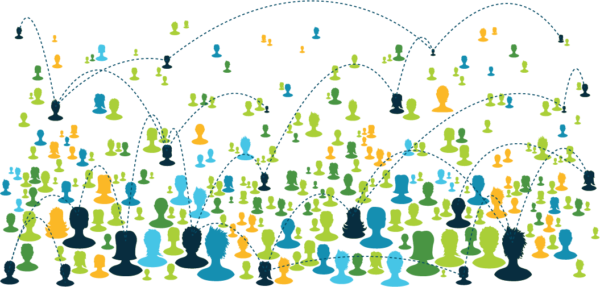Let’s talk about digital transformation. From the point of view of the CMO, digital transformation is the recognition that Marketing must change how they communicate with prospects and understand how prospects seek to communicate with them.
Digital transformation involves changing how and what you share with customers. The main methods for these communications have moved from offline and printed materials to online and digital platforms. This change affects not just advertising but also websites, social media, and user groups. Various digital channels are now used for communication between Marketing and potential customers.
This requires companies and businesses to go through a “digital transformation” in the media that they are using and the type of content they are creating. It also requires them to transform how they measure success.
Of course, there are some channels that will remain, such as events. But now there are virtual events to consider, for example, webinars. Direct mail has not disappeared, but marketing firms are certainly doing much less of it.
Initially, the website was the main online channel, but it needs potential customers to actively look for it. As marketers, we can send information directly to prospects instead of just depending on a website to attract them. We can share posts on a blog and promote that blog on Facebook, LinkedIn, and other platforms. We can distribute articles through digital newsletters and send shorter messages through Twitter.
The point is, if you want to interact with customers, you’ve got to go to the places where they hang out. Yes, if your SEO on your website is good you can get them to come hang out with you, but more often than not, you need to go hang out with them in their choice of digital social environments.
In this series of posts on digital transformation, we’re going to cover three major areas:
- Setting yourself up for a successful digital transformation
- Shifting to become customer-centric as you transform digitally
- Adding capabilities to your team to aid your digital transformation
Digital transformation isn’t just about rolling out new technology. It’s not just about adding marketing automation and building your MarTech stack. It’s also about changing your people and your company culture.
You need people who are smart in the technologies and channels that drive digital transformation. Also, since digital transformation is just as much about changing the type of content you create, you must be willing to create content that flows beautifully through these channels and is appropriate for these channels.
You will also benefit from changing your processes. You don’t want to spam people and hit them suddenly with five different messages from five different channels at the same time. Coordination is key.
Another thing to think about is your data architecture. Now that you’re collecting all this data on different prospect behavior in different places, you need to make sense of it and perhaps deploy a customer data platform to track all of it.
You will likely also change your analytics and reporting because now, instead of just counting how many emails you sent or where you put up billboards, you have to track what you’re doing in multiple digital channels. You need a way to collect all that performance, all that engagement that you are driving, into one place so you can measure what you are actually accomplishing.
The most important thing to remember in all of this is that the customer/prospect should always come first. Digital transformation is a big task, and it can seem overwhelming taken as a whole. But the whole point of beginning the journey of digital transformation is to create a better customer journey for your prospects.
Digital transformation is inevitable. It is being driven by consumers. It’s not something the corporations can control because the power has shifted from the seller to the buyer. This is why creating a customer-centric culture in your company is so important.
Knowledge is power, and customers now have growing access to knowledge via digital channels. Companies must respond – they simply don’t have a choice. The digital transformation is happening because the buyers are using digital channels to learn about your products and services before they ever engage with Sales.
If you want to excel as a Marketer in this era, you have to engage buyers in the channels they use.


